The 10 BEST Sustainable Packaging
Options for your Business’s
Shipping Requirements
Sustainable packaging is acquiring a lot of momentum these days and consumers are expecting it from the brands they support. How can you claim to be a sustainable eco-friendly brand and not have sustainable packaging or some sort? However with all the choices out there, it can be hard to choose! This article will go over 10 alternatives you can consider, instead of using plastic.

According to a 2020 report put out by McKinsey and Company, governments, on all continents, have responded to public concerns regarding packaging waste, especially single-use packaging waste, and are implementing regulations to both minimize environmental waste and improve waste-management processes. See below.

According to Packhelp, a leader in the packaging industry, sustainable packaging is becoming a higher priority for both brands and consumers – more now than ever before. McDonald’s announced its packaging will be 100% renewable and recycled by 2025. Millennials are pushing brands to be more socially and environmentally responsible. It’s clear that the term ‘eco-friendly packaging’ is clearly more than a buzzword. In fact, implementing eco packaging in your brand’s operations is no longer an option – it’s a necessity. Sustainable packaging is packaging that, over time, reduces its environmental footprint.
When it comes to Sustainable Packaging, Packhelp says you need to consider 3 things when choosing packaging: 1) the ingredients 2) the production process and 3) the reusability of the packaging. All of these will reduce the carbon footprint and extend the lifespan of the packaging.
So what are the 10 BEST Sustainable Packaging Options?
-
Corrugated bubble wrap
Remember playing with plastic bubble wrap as a child and pressing all the bubbles and hearing all the pops? Bubble wrap is made from plastic, which in itself has a lot of environmental issues. It is energy intensive, creates a lot of CO2 and is made from petroleum. Currently, plastic bubble wrap is not available with much recycled content at all. Recycled options that exist typically have less than 20% of post industrial waste only and this material is difficult to recycle. You might see “biodegradable” options out there. Don’t be fooled as many of these options are not really biodegradable at all. They claim to be biodegradable, however they are really just “oxo-biodegradable”, which means an additive is incorporated into the plastic to help is break down into micro fragments. So what is the better alternative to this?
Corrugated bubble is made from shredded corrugated material, typically made out of the unusable portion of our corrugated sheets after they are cut into shipping boxes. So, not only is our Corrugated Bubble 100% recycled (95% post-consumer!), recyclable and compostable, it is also upcycled!
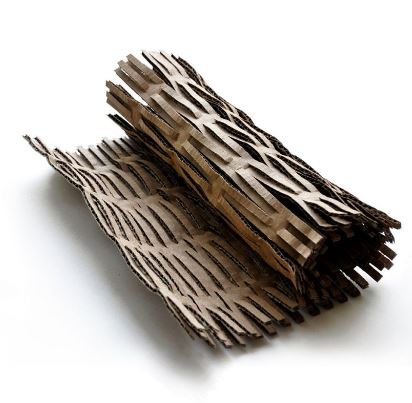
Here is a short video on how to use corrugated bubble wrap for packaging products.
https://www.facebook.com/watch/?v=2271223196225059
-
Cornstarch packaging
As the name suggests, the main resource used in the packaging is corn starch. It holds a consistency of plastic and produces polylactic acid (PLA) from corn starch in the process. This explains why corn starch-based plastics are also known as PLA plastics.
Instead of using packaging materials made from synthetic polymers, new material has been developed using polylactic acid (PLA), which is made from fermented sugars, usually from cornstarch. The materials made from PLA are biodegradable which is important for the environment.
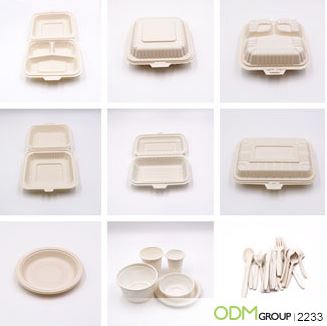
If disposed of correctly, packaging material made from cornstarch will break down into carbon dioxide and water within several months. However, if the material is not disposed of correctly cornstarch-based material will take longer to decompose, especially if there is no oxygen or light available.
-
Ecologic Paper Bottle
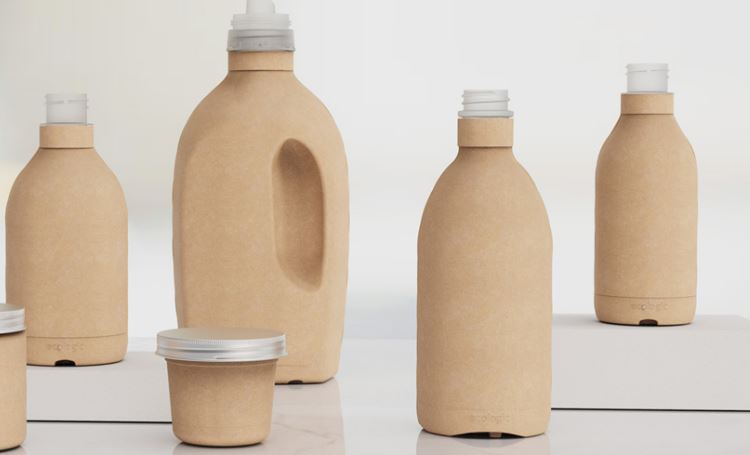
Ecologic, in partnership with Seed Phytonutrients, came up with the first shower-friendly paper bottle. Its recyclable and compostable material was made from 100% post-consumer recycled paper. Instead of glue, the bottle is held together through interlocking grooves.
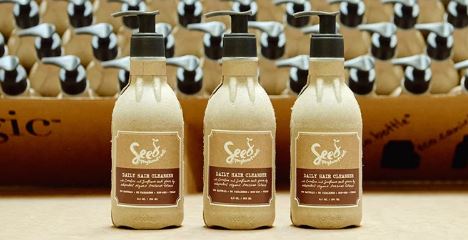
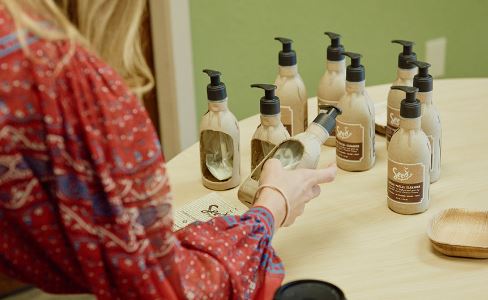
-
Biodegradable Peanuts
Biodegradable peanuts are a sustainable packaging choice. By definition, “biodegradable” means that the item can be broken down by bacteria or other living things. So when you no longer need these peanuts, they can be composted.
These packing peanuts are made from natural, nontoxic sources, such as wheat and corn starch.
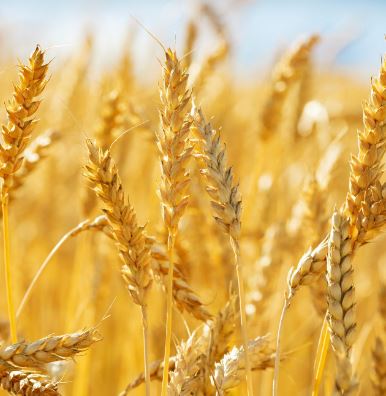
They dissolve in water and can be thrown into compost piles after a single use. In addition, biodegradable foam peanuts do not have an electrostatic charge, meaning they will not stick to clothes.
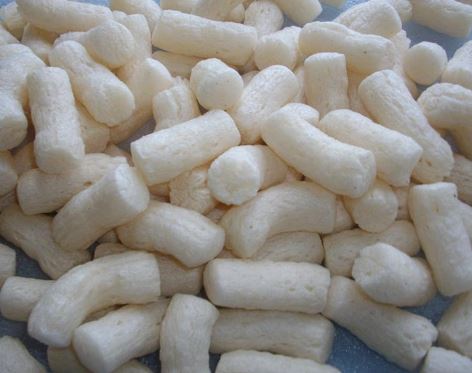
Biodegradable packing peanuts are much less harmful to the environment than their Styrofoam counterparts. While foam peanuts can spend centuries floating in the ocean, the biodegradable variety beings to break down within minutes of contacting moisture. They dissolve in most types of liquid and leave no waste behind. If ingested by animals or sea life, they pose no major health threat because they are made using non-toxic materials.
-
Recycled Air Pouch Pillows
These pillows are made from low-density polyethylene. These pillows can contain up to 95% pre-consumer recycled content. When looking for these pillows for your shipping needs, make sure to use the ones with recycled content. Like all polyethylene, these EarthAware pillows can be repeatedly recycled. The ones below are from Propac.
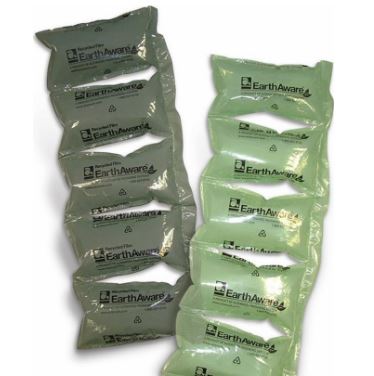
-
Mushroom Packaging
Now this is a packaging material that I find quite fascinating.
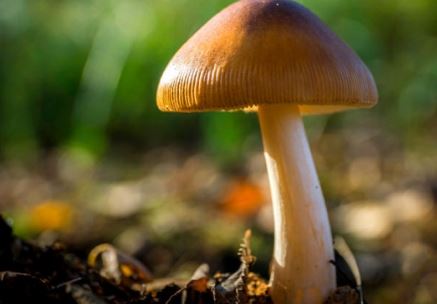
The company Mushroom Packaging uses mycelium and hemp to create this packaging. You can choose the way you want your packaging to look (the specifications) and it can be grown for you in 7 days. When you are done with your packaging, Mushroom® Packaging does not require a composting facility, it relies on the soil microbes to degrade. Simply break up your packaging, incorporate into the soil, and in 30 days it will be fully composted.
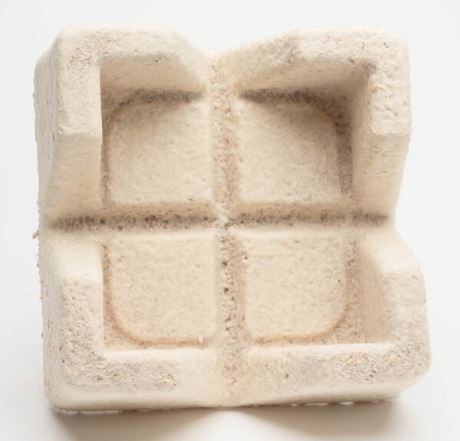
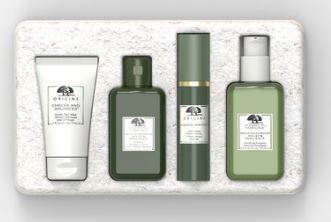
The process is described below. The designers generate a 3D model of your packaging insert. The trays are then filled with the mushroom composite and then are left to grow!
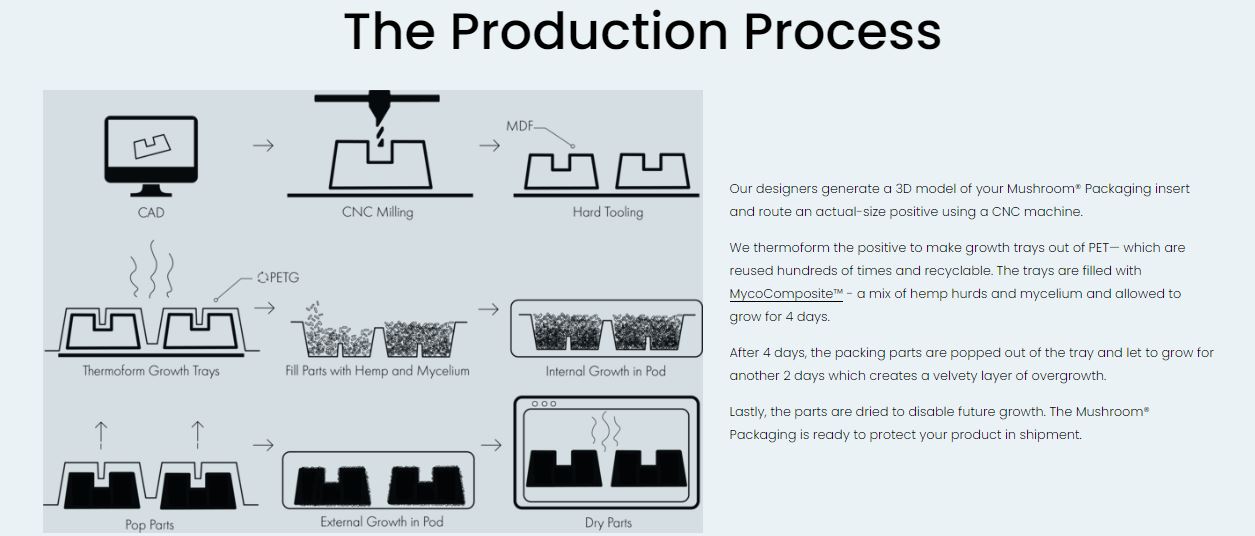
The insert for this packaging (shown below) is made out of mushrooms and hemp and is fully compostable.
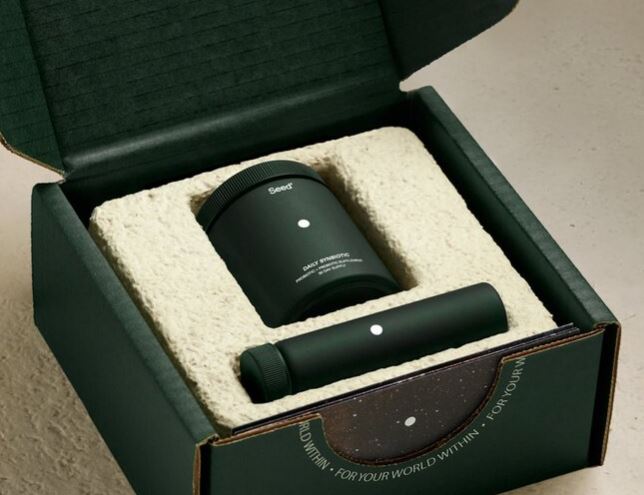
According to an article put out by “We Don’t Have Time” regarding IKEA using mushroom packaging, some of the benefits of using mushroom packaging include:
- Uses only 12% of the energy used in plastic production.
- It produces 90% less carbon emissions than produced during plastic manufacture.
- The total amount of carbon dioxide component in atmosphere remains almost undisturbed by growing fungi-based packaging. Fungi uses up carbon dioxide that gets incorporated into the packaging material. On disposal, packaging material gets decomposed or composted and returns the carbon dioxide back into the soil.
- It decomposes with 30–90 days. Even if it is ingested by organisms, it has no dangerous side effects, although it has no nutritional benefits either.
- Alternative packaging is a lucrative economic avenue. The global market for sustainable packaging is poised to reach more than US $142 billion in coming years. Presently, bio-plastics and green materials just constitute 1% of total packaging market share, so there is immense growth potential for manufacturers in this segment.
- Rural communities can benefit financially by supplying agricultural wastes to mycelium manufacturers.
Ecovative Design is a biotech company creating next generation materials through mycelium bio-fabrication. Some of the areas they delve into are apparel, sustainable packaging, skincare and food.
-
Seaweed Packaging
I always said as a joke, as I finished my bag of chips…”Wouldn’t it me great, if I could just eat this bag?” Well, that is now truly becoming a reality. Food manufacturers are making packaging edible. Even if you are not a fan of eating the outside of a package, this type of packaging is completely compostable, unlike foil or plastics.
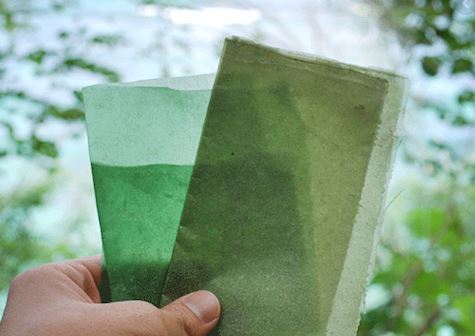
Notpla https://www.notpla.com/ is a huge player in the market right now for seaweed packaging. Lucozade Sport has teamed up with Notpla, a materials engineering start-up to trial plastic-free sports drinks. The revolutionary Ooho seaweed pods filled with Lucozade Sport Orange are 100% edible and compostable, they will also naturally biodegrade in four to six weeks.
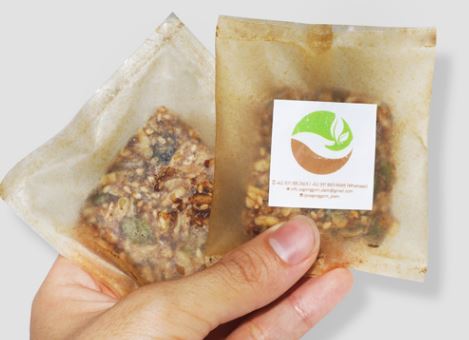
Here is a link to see more seaweed packaging products from different companies.

In 2019 Lucozade Sport carried out the largest ever trial as over 30,000 liquid capsules were handed out to runners of the London Marathon. They are a completely new and exciting way to reduce plastic use in the long-term at mass-participation sporting events.
Whiskey manufacturers Glenlivet also teamed up with Notpla to release their “Capsule Collection” of seaweed pod encased shots of their high-quality booze. The capsule is completely edible and biodegrades faster than fruit.
Evoware is also a huge player in the market. They are currently utilizing seaweed as a wrapper that can dissolve. Check out this amazing video that shows what Evoware is doing to save the environment.
-
Recycled Cardboard and Paper
Now this is an obvious one, however it needs to be stated nonetheless.
Use recycled cardboard and paper – ALWAYS. Choose cardboard and paper that contains recycled content.
When it comes to certifications, choose certifications like FSC (Forest Stewardship Council) and SFI (Sustainable Forestry Initiative) if possible for your paper and cardboard packaging. These emerged to promote sound management of the world’s forests and to ensure that tree-based products we use are grown and harvested in sustainable ways.
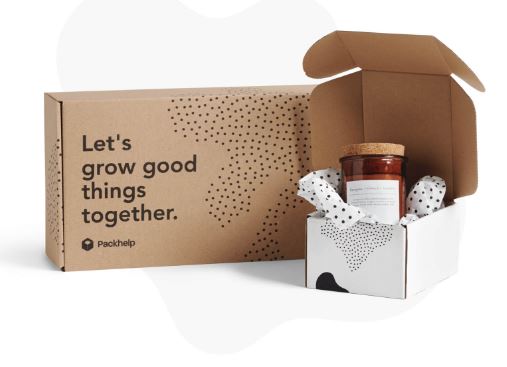
Also, think of innovative ideas to use recyclable materials. For example H&M’s bag turns into a hanger.
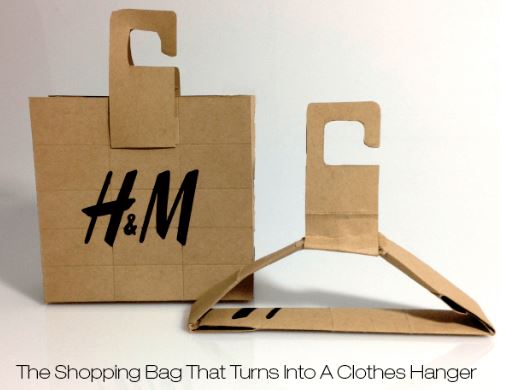
- Waste Fabric ScrapsWhether you have a business, or just a person wanting to package in a more sustainable way, waste fabric scraps can be amazing. Instead of throwing out clothing or textiles that have rips, use them to wrap gifts! If you are a brand that makes or sells clothing, use the waste fabric to wrap your clothing. Customers will appreciate your efforts.

By using waste fabric scraps, instead of new fabric, to wrap items can reduce carbon dioxide emissions, reduce the amount of water required (as you are not having to create a new fabric) and reduce energy use.
-
Compostable Mailer
There are a lot of compostable mailer bags out there, however here is one from Noissue.
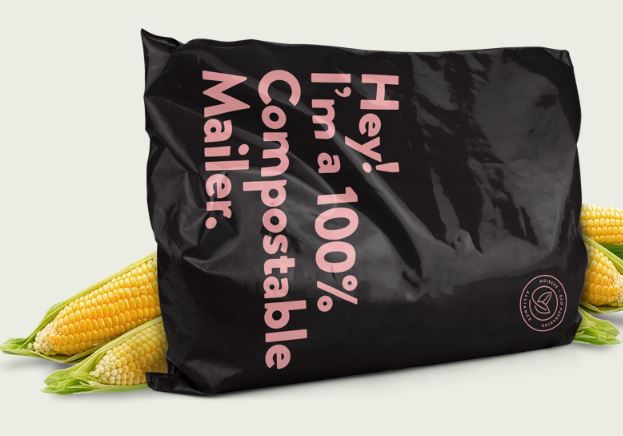
Noissue also creates stickers, paper, cards, labels, stamps etc.
Noissue compostable mailers are made from a combination of PBAT, a bio based polymer which is compostable, and PLA which is made up of plant materials such as regular field corn and wheat straw. Our use of PLA makes up barely 0.05% of the annual global corn crop, making it an incredibly low-impact resource.
The bags are certified by the leading authorities worldwide; meeting American, European, International and Australian standards – including certifications for your domestic home compost. To gain these certifications, the product must break down within 90 days in commercial compost and 180 days in domestic compost conditions, including worm farm compost. After degradation, they must leave no harmful residues behind.
Jere is an Inspiration Guide from Noissue to get some ideas.
https://www.noissue.ca/blog/inspo
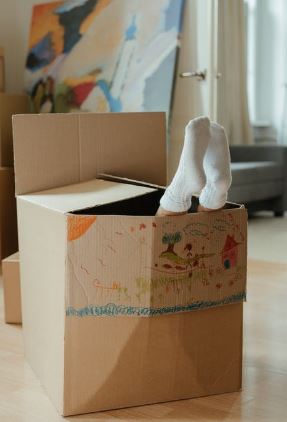
So there you have it. The 10 BEST Sustainable Packaging Options for you Business’s Shipping Needs. I hope you enjoyed this article and if you have any other options you would like to share with me, I would love to hear from you. Just send me an email at modacirc@gmail.com or put your name in the contact box and I will get back to you!
Error: Contact form not found.
About the author:

Lizzy Cross is an expert in sustainable and circular fashion and is the founder of Moda Circolare, a sustainable fashion consulting agency. Moda Circolare helps fashion and apparel brands embed sustainability into their current business strategies. Moda Circolare’s mandate is to help the fashion industry live in harmony with nature and they do this by working with brands to create robust Sustainable and Circular Business Strategies and Roadmaps for Success.

